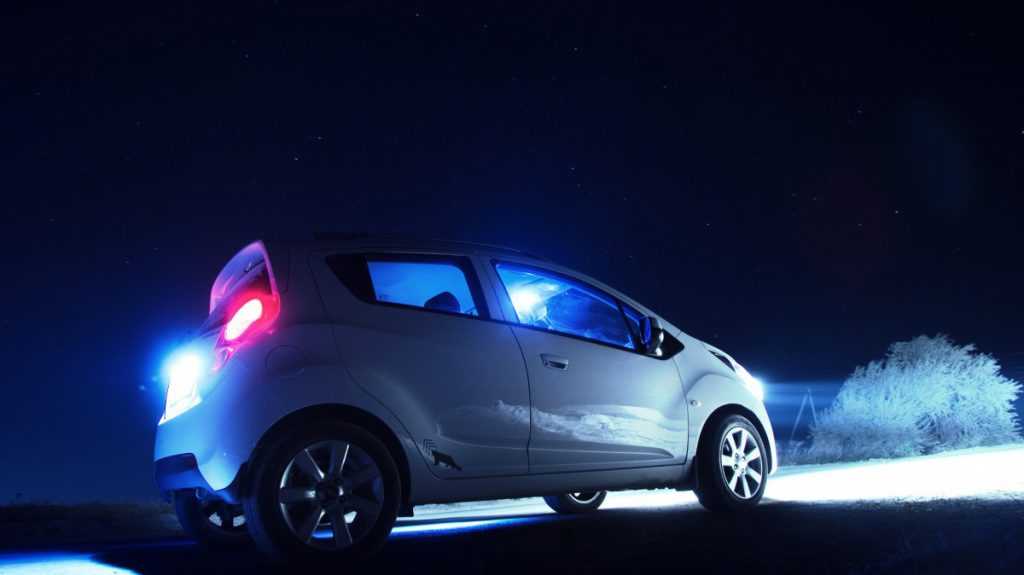Are Colored Headlights Legal? A Lawful Answer
The standard automobile headlight colors are white or yellowish-white. But headlights of different colors are available, such as blue, green, and red. Are colored headlights legal?
There is no straightforward answer. It needs a little explanation to understand which ones are allowed and which are not.
Many drivers want to personalize the look of their car, including the headlights. But you have to keep in mind that they are a safety component. So, customization rules are likely to be bound by some legal obligations.
Are Colored Headlights Legal?
Yes and no. Why? Because there are different rules for public road and off-road driving.
They are legal when you use them off the road or in a private property like in your driveway. Turning them on while driving on the highway or city streets is completely illegal.
The laws may slightly vary in different U.S. states, but they are essentially the same. For example, the California Vehicle Code section of 25950 clearly states that the life visible in front of a vehicle should be either white or yellow. The same rule applies to tail lights, turn signals, and brake lights.

The only exceptions at the rear side marker lamps that could be read. Even the fog lamps should be in the spectrum from white to yellow shades.
Are yellow headlights legal? It’s clear from the laws that they are, and so are white lights.
Other colors are not street legal and you can use them only for personal use, such as a photo shoot or a commercial purpose.
SEE MORE:
What about the Blue Headlights
Are colored headlights legal? You have got the answer that they are not. But what about blue headlights? Certain popular headlight types such as LED, Xenon, and some halogen lights are blue. Are they legal?
Yes, they are. They emit bright white light despite looking blue to human eyes because the headlights we are accustomed to seeing are closer to the yellow color spectrum, not white.
LED and Xenon or HID headlights are currently highly popular. If you are confused regarding using them due to their blue emission, don’t be. They are completely safe and legal to use everywhere.
Color Headlights for Cars
So, the legal headlight colors are yellow and white. Blue headlights are also legal because they appear almost white.
Why other colors are not legal, you might be asking yourself. Well, it’s all about visibility. Lights of other colors, such as red, purple, or green, are less visible to other drivers in the dark.

The driver himself also won’t see the road clearly. With these headlights on, driving in foggy or hazy conditions would be extremely dangerous.
FAQs
-
What are the most common legal headlight colors?
The most common legal headlight colors are white and yellow. These colors provide the best illumination and visibility for drivers.
Some regions may allow certain shades of blue or purple, but they are typically subject to strict regulations.
-
Can I use colored headlight bulbs if they are DOT-approved?
Even if colored headlight bulbs are DOT-approved, they may still be illegal in some areas if they emit colors other than white or yellow.
It’s essential to check your local regulations to ensure compliance.
-
Are aftermarket colored headlight bulbs legal?
Aftermarket colored headlight bulbs are often not legal for road use. They may emit colors that can be distracting or confuse other drivers.
It’s advisable to check your local laws and consult with a knowledgeable automotive expert before installing aftermarket bulbs.
-
Can I use colored headlight covers or films?
Colored headlight covers or films are generally not recommended because they can reduce the brightness of your headlights, compromising safety.
Using such covers or films may also be illegal in many jurisdictions. It’s crucial to verify local regulations before using them.
-
Are colored headlights allowed for off-road use?
A6: Some jurisdictions may allow colored headlights for off-road use or special events, but even in those cases, there may be restrictions on the colors and usage.
Always check the local off-road or event-specific regulations before using colored headlights.
Check out this video from GCM to learn about the law and regulations on everything upgraded lights for your car!
-
What are the consequences of using illegal colored headlights?
Consequences for using illegal colored headlights can include fines, penalties, and potential vehicle impoundment.
Moreover, colored headlights that blind or distract other drivers can lead to accidents, making them a safety risk.
-
Can I use colored headlights in car shows or exhibitions?
Car shows or exhibitions may have different rules regarding colored headlights, but it’s essential to follow event-specific guidelines and ensure that your vehicle complies with local road laws when traveling to and from such events.
-
How can I check the legality of colored headlights in my area?
To determine the legality of colored headlights in your area, you can consult your local Department of Motor Vehicles (DMV), law enforcement agency, or review the vehicle code for your jurisdiction.
Additionally, seeking advice from automotive professionals can help clarify local regulations.
-
Are there any exceptions to the colored headlight rules?
In some cases, emergency vehicles and specific types of vehicles used for specific purposes (e.g., construction or agricultural equipment) may have exceptions to the colored headlight rules.
However, these exceptions are typically tightly regulated and may not apply to regular passenger vehicles.
Final Words
Are colored headlights legal? Yes, they are, but in certain conditions. You can install them in your car but have to switch on to white, yellow, or blue lights when driving on public roads.
To stay on the safe side, never forget to check the laws of your area before going for an aftermarket headlight fixture.














